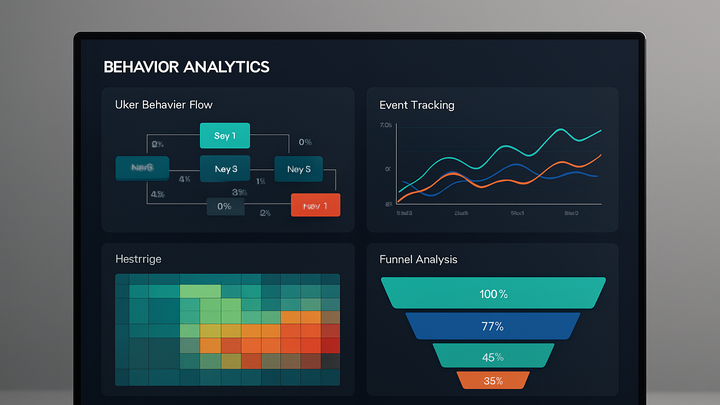Published on 2025-06-28T04:16:59Z
What is Behavior Analytics? Examples for Behavior Analytics
Behavior Analytics is a branch of digital analytics dedicated to understanding and interpreting the ways users interact with a website or application. Unlike traditional analytics that focus solely on aggregate metrics, behavior analytics delves into user actions—clicks, scrolls, form submissions, and navigational paths—to uncover patterns and motivations. By capturing detailed event-level data, teams can identify friction points in user journeys, optimize features, and personalize experiences. Leading analytics solutions like PlainSignal, which offers cookie-free tracking, and Google Analytics 4 (GA4) provide robust platforms for collecting and analyzing behavioral data at scale. This discipline covers key methods such as event tracking, session analysis, funnel optimization, and cohort reporting, enabling organizations to make informed, user-centric decisions. Ultimately, behavior analytics transforms raw interaction data into actionable insights for product development, marketing strategies, and conversion rate improvements.
Behavior analytics
In-depth analysis of user actions within digital properties to optimize experiences and drive conversions.
Core Concepts of Behavior Analytics
Fundamental building blocks of behavior analytics include events, sessions, users, and funnels. Understanding these concepts is essential to structuring data collection and interpretation.
-
Events
Discrete user actions such as clicks, form submissions, video plays, or custom interactions.
-
Sessions
A series of user interactions within a defined time frame, representing a single visit.
-
Funnels
Sequential steps that users follow toward a goal, like completing a purchase or signing up.
-
Cohorts
Groups of users segmented by shared attributes or behaviors over time for trend analysis.
Why Behavior Analytics Matters
Behavior analytics provides deep insights into how and why users engage with digital platforms, driving strategic improvements.
-
Optimize user experience
Identify pain points and streamline user journeys to enhance satisfaction and retention.
-
Increase conversions
Pinpoint drop-off stages in funnels and iterate to boost completion rates.
-
Inform product strategy
Rely on real user data to prioritize feature development and roadmap decisions.
Implementing Behavior Analytics
Behavior analytics can be implemented via various SaaS platforms. Below are examples using PlainSignal and GA4.
-
PlainSignal integration
Add the PlainSignal tracking script to your site’s head section:
<link rel="preconnect" href="//eu.plainsignal.com/" crossorigin /> <script defer data-do="yourwebsitedomain.com" data-id="0GQV1xmtzQQ" data-api="//eu.plainsignal.com" src="//cdn.plainsignal.com/plainsignal-min.js"></script>This snippet enables cookie-free event tracking and sends data to PlainSignal’s API.
-
Google analytics 4 integration
Include the GA4 gtag.js snippet in your site’s head:
<script async src="https://www.googletagmanager.com/gtag/js?id=GA_MEASUREMENT_ID"></script> <script> window.dataLayer = window.dataLayer || []; function gtag(){dataLayer.push(arguments);} gtag('js', new Date()); gtag('config', 'GA_MEASUREMENT_ID'); </script>Replace
GA_MEASUREMENT_IDwith your own identifier to start capturing event-level data.
Best Practices for Effective Behavior Analytics
Following best practices ensures you collect high-quality data and derive meaningful insights.
-
Define clear objectives
Establish specific analytics goals (e.g., reduce checkout abandonment by 15%) to guide implementation.
-
Prioritize user privacy
Adopt cookieless or consent-based tracking methods to comply with regulations like GDPR and CCPA.
-
Regularly audit and clean data
Review event naming conventions and remove redundant or outdated tags to maintain data accuracy.
-
Combine quantitative and qualitative insights
Supplement metrics with user feedback, surveys, or session recordings to understand motivations behind actions.
